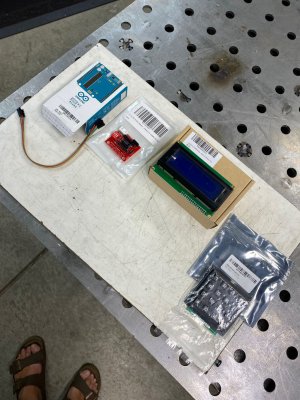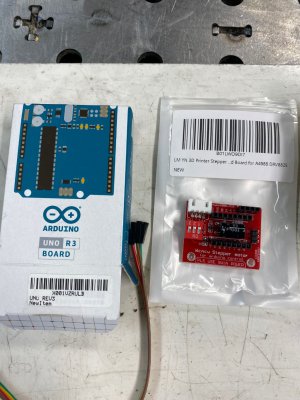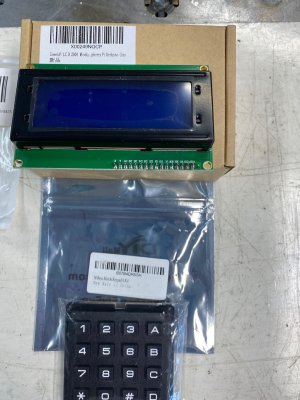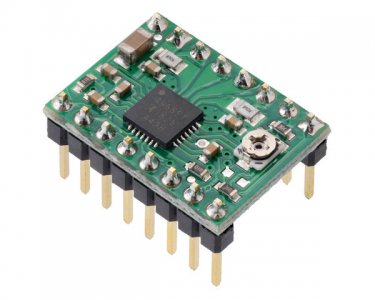- Joined
- Mar 26, 2018
- Messages
- 8,411
Mark (markba633csi) helped me identify and purchase these first step parts.
Arduino UNO R3 board
DRV 8825 Board
2004 LCD Display
16 Key Matrix Keypad
I have this stepper motor coming
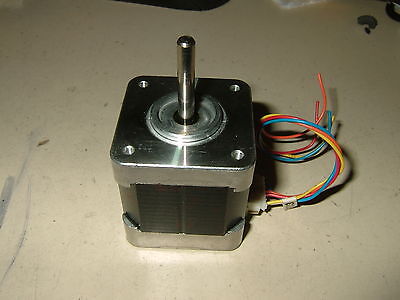
Based on the parts I've put together, what would be the next step?
I plan on driving the motor to run an OD grinding fixture as my first experiment.
This is an effort to become familiar, as a first step, to the magic of Arduino components.
Thanks for your help!
Jeff
Arduino UNO R3 board
DRV 8825 Board
2004 LCD Display
16 Key Matrix Keypad
I have this stepper motor coming

NEW Stepper motor Nema17 - CNC Mill Robot Reprap Makerbot Arduino 76oz/in 10V | eBay
Astrosys Stepper. 1.8 deg / step. Connection wire provided. Weight 11.3 oz. shaft length 27mm. total length of 44mm. width 42mm x 42mm.
www.ebay.com
Based on the parts I've put together, what would be the next step?
I plan on driving the motor to run an OD grinding fixture as my first experiment.
This is an effort to become familiar, as a first step, to the magic of Arduino components.
Thanks for your help!
Jeff


